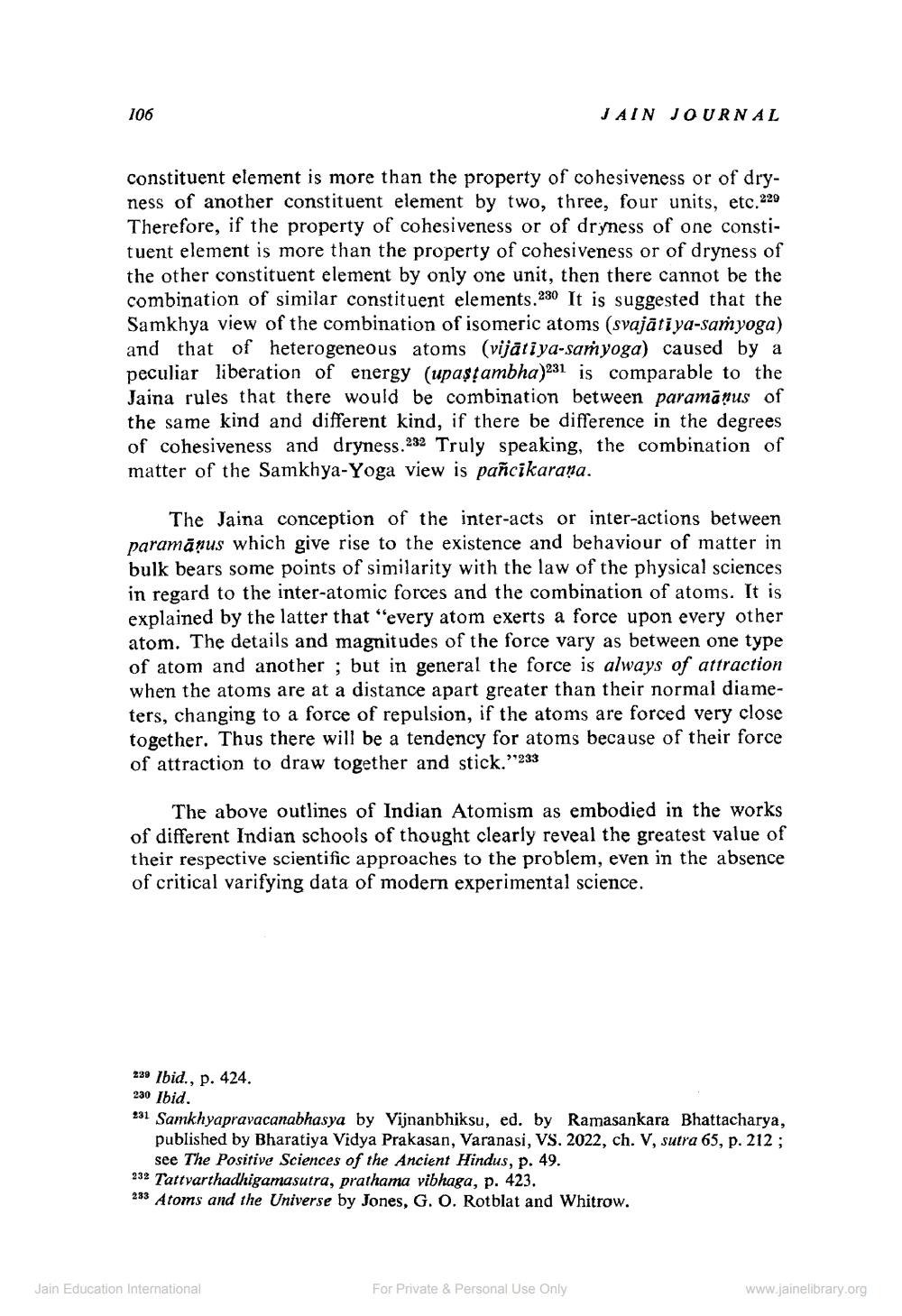________________
106
constituent element is more than the property of cohesiveness or of dryness of another constituent element by two, three, four units, etc.229 Therefore, if the property of cohesiveness or of dryness of one constituent element is more than the property of cohesiveness or of dryness of the other constituent element by only one unit, then there cannot be the combination of similar constituent elements.280 It is suggested that the Samkhya view of the combination of isomeric atoms (svajātīya-saṁyoga) and that of heterogeneous atoms (vijātiya-samyoga) caused by a peculiar liberation of energy (upaṣṭambha)231 is comparable to the Jaina rules that there would be combination between paramāņus of the same kind and different kind, if there be difference in the degrees of cohesiveness and dryness.232 Truly speaking, the combination of matter of the Samkhya-Yoga view is pañcikaraṇa.
The Jaina conception of the inter-acts or inter-actions between paramāņus which give rise to the existence and behaviour of matter in bulk bears some points of similarity with the law of the physical sciences in regard to the inter-atomic forces and the combination of atoms. It is explained by the latter that "every atom exerts a force upon every other atom. The details and magnitudes of the force vary as between one type of atom and another; but in general the force is always of attraction when the atoms are at a distance apart greater than their normal diameters, changing to a force of repulsion, if the atoms are forced very close together. Thus there will be a tendency for atoms because of their force of attraction to draw together and stick."233
JAIN JOURNAL
The above outlines of Indian Atomism as embodied in the works of different Indian schools of thought clearly reveal the greatest value of their respective scientific approaches to the problem, even in the absence of critical varifying data of modern experimental science.
239 Ibid., p. 424. 230 Ibid.
231 Samkhyapravacanabhasya by Vijnanbhiksu, ed. by Ramasankara Bhattacharya, published by Bharatiya Vidya Prakasan, Varanasi, VS. 2022, ch. V, sutra 65, p. 212;
see The Positive Sciences of the Ancient Hindus, p. 49.
232 Tattvarthadhigamasutra, prathama vibhaga, p. 423.
233 Atoms and the Universe by Jones, G. O. Rotblat and Whitrow.
Jain Education International
For Private & Personal Use Only
www.jainelibrary.org




